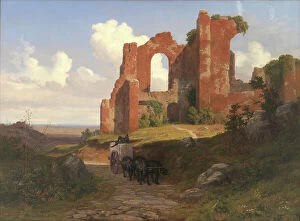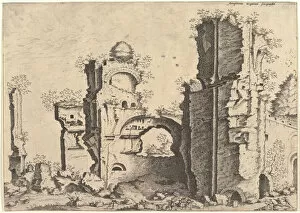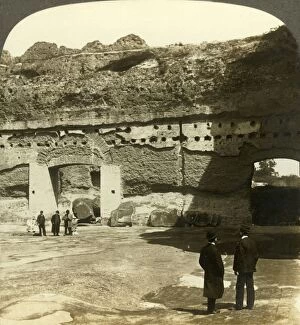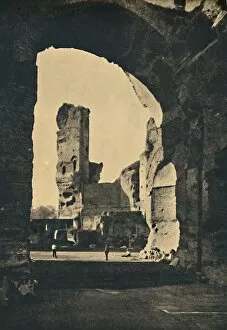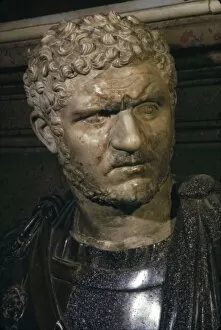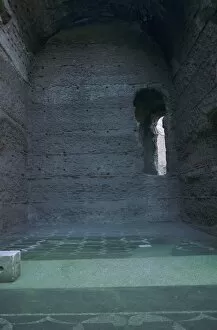Septimius Bassianus Collection
Septimius Bassianus, better known as Caracalla, was a prominent Roman emperor who ruled during the 3rd century
For sale as Licensed Images
Choose your image, Select your licence and Download the media
Septimius Bassianus, better known as Caracalla, was a prominent Roman emperor who ruled during the 3rd century. He is often associated with the Baths of Caracalla, an impressive complex that still stands today in Rome. This series of baths was one of his most notable architectural achievements and served as a symbol of his power and grandeur. Caracalla's reign was marked by significant coinage production, with various coins depicting his image being circulated throughout the empire. These coins, such as the Aureus, Denarius, Sestertius, and others showcased his likeness and were created by unknown artists at the time. The ruins of the Baths of Caracalla provide us with a glimpse into their former magnificence. The peristyle area in particular showcases its grandeur and beauty. Photographs from different eras capture its splendor through time - from black-and-white images dating back to 1909 to vibrant colored depictions from 1927. One remarkable artifact associated with Caracalla is an ancient marble bust portraying him. This finely crafted sculpture captures his features and serves as a testament to his prominence during this period.

